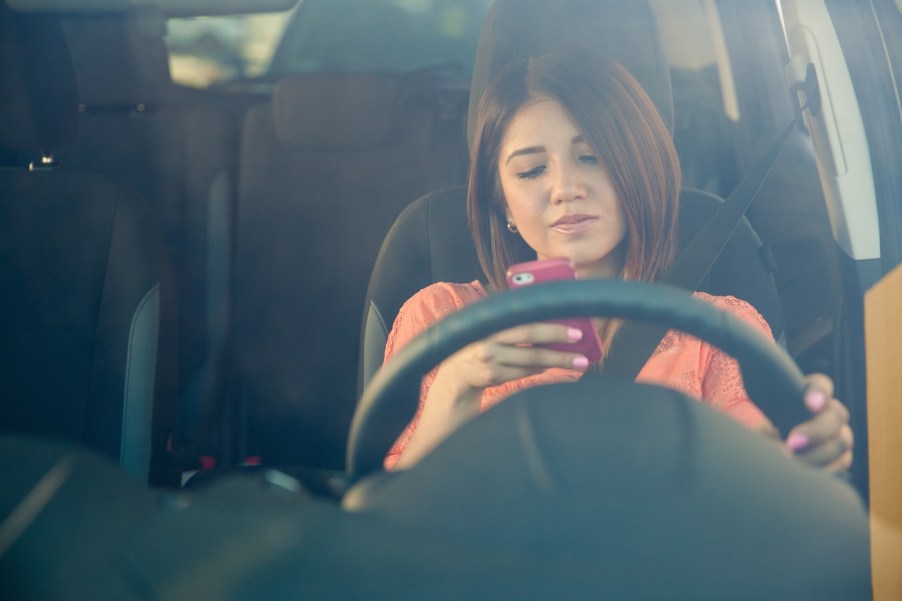
Texting and Driving Is Still Legal in 1 State
We all know texting and driving is dangerous and illegal. But when our phone notification goes off, it’s very difficult not to open our messages for a quick peak. But Montana residents don’t deal with the same dilemma. Why? Because there’s no law against texting and driving there. And in three additional states it’s technically illegal but you can’t actually get pulled over for it.
After cellphones exploded in popularity, the increased number of crashes made it clear that distracted driving was a deadly problem. One by one, states have passed hands-free laws. Most of these laws limit cellphone use while driving, so you can complete a phone call using a headset or your car’s audio system. But you can’t hold your phone up to your ear. Twenty-four states have hands-free cellphone laws. Even more states passed laws specifying that you can’t text while driving.
Until recently, the only two holdout states without laws against texting while driving were Missouri and Montana. For a while, Missouri specified that no one under 21 or who was driving professionally could text behind the wheel. Then in August 2023, Missouri passed the Siddens Bening Hands Free Law. It takes after the majority of the country and prohibits handheld cellphone use for all drivers. Its technically in effect right now. But the kicker is that officers in Missouri can’t issue citations for the law until the beginning of 2025.
That leaves Montana as the sole state with no law against holding your phone and texting while driving. Even New Hampshire, the only state that doesn’t require anyone to wear seatbelts, has a law against texting while driving.
Two more states with interesting texting laws are Nebraska and Utah. In both of these states, it is illegal to text while driving. But the state of Nebraska lists texting and driving as a secondary traffic violation. And according to the IIHS, texting and driving in Utah is part of a broader “distracted driving” bill and effectively a secondary violation.
So what in the world is a secondary traffic violation? First, you have to understand a “primary traffic violation.” These are the violations–such as running a red light or speeding–that police officers can stop you for. Once they pull you over they may notice a “secondary violation,” such as something hanging from your rearview mirror. Then they can write you a ticket for both.
Note that primary and secondary traffic violations vary greatly by state. So it’s critical you know your local guidelines.
In Nebraska and Utah, texting and driving is a secondary traffic violation. So police must pull you over for something else before writing you a ticket for texting and driving. But honestly, it wouldn’t be wise to test this law. If you were cruising down the road while blatantly texting–and just barely crossed out of your lane–a police officer could pull you over and throw the book at you.



